How to Optimize Routes with Excel in 2024 [+Is It Worth It?]
Learn how to plan and optimize routes in Excel (+free templates), and how to use spreadsheets with Google Maps, Route Optimization Software, and more.
Home > Blog > Bus Routing Software: How to Plan Bus Routes 50% More Efficiently
Route TrackingIn this article, we’ll show you how to start planning tours with bus routing software from beginning to end.
In this article, we’ll show you how to start planning tours with bus routing software.
We’ll cover the basics like:
But also:
If you want to know about all of this and more, you’ve come to the right place.
Let’s get started.
Whether you take students on a trip or you organize city bus tours, driving to and from sights requires you to plan bus routes for those trips.
And while we usually cover route planning for delivery, the same principles apply - planning efficient routes with multiple pick-ups and drop-offs.
But there’s a lot more to this topic. So, let’s explain it.
According to the Business Dictionary, route planning is:
Computing the most cost-effective route involving several needs or stopovers by minimizing the distance travelled and/or time taken.
But simply put: route planning is all about creating efficient routes (or driving directions) for multiple stops on the map.
As you can imagine, that takes a lot of time especially if you’re still planning manually.
You also need to figure out the best route possible according to the schedule of the tour, but several other factors, as well.
Planning an optimal bus route is HARD.
When it comes to basic route planning, many bus route planners rely on a few key factors. Typically, that includes distance to sites and the tour schedule.
By contrast, route optimization involves a lot more factors. These include parameters that can be related to the bus tour:
But also external conditions such as:
You can plan a truly optimal route only if you take all of the above into account (plus distance and the tour schedule).
And in fact, bus route optimization is a more reliable way to plan, manage, and map routes regardless of the type of tour you operate.
Let’s take a look at why that matters.
Optimizing tour bus routes is important because it makes routes more efficient. As a result, the bus tours you plan waste a lot less resources and bring in more profit.
In fact, vehicle route optimization software can cut operating costs in some cases up to 30% by reducing:
And if you own and operate a fleet of vehicles, those costs can eat a significant chunk of your annual income.
At the same time, it improves passenger satisfaction on tours. Which means more people will want to ride on your busses instead of your competitors’.
With less time on the road, passengers are more comfortable during the tour. And the less time they spend riding around on the bus, and the more time they spend around the sights, the better their experience.
Likewise, route planning and optimization streamline how drivers interact with passengers.
When drivers know the exact time when they have to collect the group, they always arrive at the meeting point early or on-time.
Also, drivers are under less pressure because they know where they are going, what roads they need to take, and how long they have to drive until they reach their next destination.
That greatly reduces their workload and gives them more time to focus on customer service.
But all of this falls apart if you don’t automate the planning process.
One of the problems with manually planning bus routes and tours is that it takes a lot of time to complete.
A route planner can spend several days researching the factors necessary to find an optimal bus route. And extra time calculating the schedule and routes based on that information.
That’s a lot of time the planner spends completing just one task from the entire workload. And not a very effective use of his time.
Moreover, the routes he plans are usually static or fixed. If something happens on the road, the planner can’t reroute the bus to prevent delays. And drivers are left to their own devices.
For example, if a driver encounters a bottleneck in the street, he’ll have to wait for the traffic to start moving before continuing on his route.
Bus drivers also have to remain in constant contact with dispatch while driving (usually over the phone or radio). Which can impact the safety of everyone on the bus.
But all of this affects your organization, as well.
By relying on one person to plan tour routes, your company exposes itself to a problem if your route planner is out of the office or otherwise unavailable.
Without knowledge of the local geography and road network, and planning skills, drivers will depend on less efficient routes. Which can have an immediate effect on the operating costs of each tour.
Similarly, it’s hard to scale operations when you manually plan tour routes. You’ll have to hire additional staff every time you expand your fleet or add new tour locations.
Reducing the safety and quality of driving also affects the reputation of your company. Which makes your bus tour company less competitive in an already aggressive market.

There are many challenges when planning routes for bus tours. You’ll have to overcome all of them if you want to plan optimal bus routes. And make your operations more efficient.
But before that can happen, let’s first take a look at what they are:
On bus tours, passenger safety always comes first. Typically, their safety depends on the driver’s skill and the factors he encounters on the road like traffic, weather, or road conditions.
At the same time, some streets are more challenging to navigate with a bus. For instance, narrow lanes, sharp turns, or tiny roundabouts all put pressure on the driver and vehicle.
Logically, the safest streets are those with lower speed limits and wider lanes.
Passengers buy tour packages to travel. For them, the bus ride to a certain destination is just a means to an end.
If drivers don’t arrive at the sight on time, it may have a domino effect on the entire tour itinerary.
Not to mention, delays and missed stops frustrate passengers. And that can have a serious impact on their overall experience with the trip.
Passengers don’t like walking on bus tours. The shorter the distance to a tourist attraction, the better the experience for the passengers.
It’s vital to plan stops that allow drivers to pull up and empty the bus at the site.
The location has to be close to the entrance to ensure the shortest walking distance. And wide enough to allow the bus driver to easily maneuver his vehicle.
Tour bus routes have to have short travel times to destinations.
Shorter journeys between two locations reduce the time passengers spend riding the bus. Which improves their satisfaction on the trip.
And at the same time, it minimizes fuel consumption and the cost of the tour.
Most bus tours are prepaid services. Any extra costs gut the profit margins you receive from the trip.
But because operating expenses aren’t fixed, optimizing operations and lowering costs can generate more turnaround from each tour.
So on the one hand, an optimal route helps you to put a better price on your tours. (And make you more competitive if you offer cheaper seats on the trip)
On the other hand, you’ll reduce fuel consumption or drive time, and spend less money on the bus tour. Which means you get more profit from every ticket or package deal that you sell.
Driving a bus through dense traffic raises the cost of the tour. Traffic jams, gridlocks, tie-ups, and bottlenecks all impact how much time your vehicles spend on the road.
On the one hand, that can raise fuel consumption and increase operating expenses. On the other hand, it can affect the tour schedule and harm passenger satisfaction.
So, if your drivers can avoid traffic congestion, they can save you a lot of resources.
Choosing the right access points makes it easier for drivers to reach every destination on the bus tour.
If the stops on your route lack accessibility, drivers will spend a lot of time parking when dropping off passengers.
The right pick-up location has to have two things:
If the pick-up point is far away, passengers will have to walk a long distance to reach the bus. And depending on the type of passengers, that can increase the departure time and hinder the tour schedule.
If there’s no parking near the point of departure, the bus can block the road while waiting for passengers to return from the site or board the bus. Which can lead to a parking violation and fine.
Waiting time and empty movement between two consecutive trips is called a deadhead or an idle time.
It refers to the amount of time a vehicle is on the road without carrying any passengers.
Tracking how much idle time each vehicle spends can help you reduce waste and reduce the cost per tour.
Quality bus routing software has features that address all of these challenges. But for you, the challenge is finding the solution that matches the needs and requirements of your bus tours and route planning operations.
However, there are essential components of a route optimization solution. And to help you, here’s what features you need to consider when choosing it:
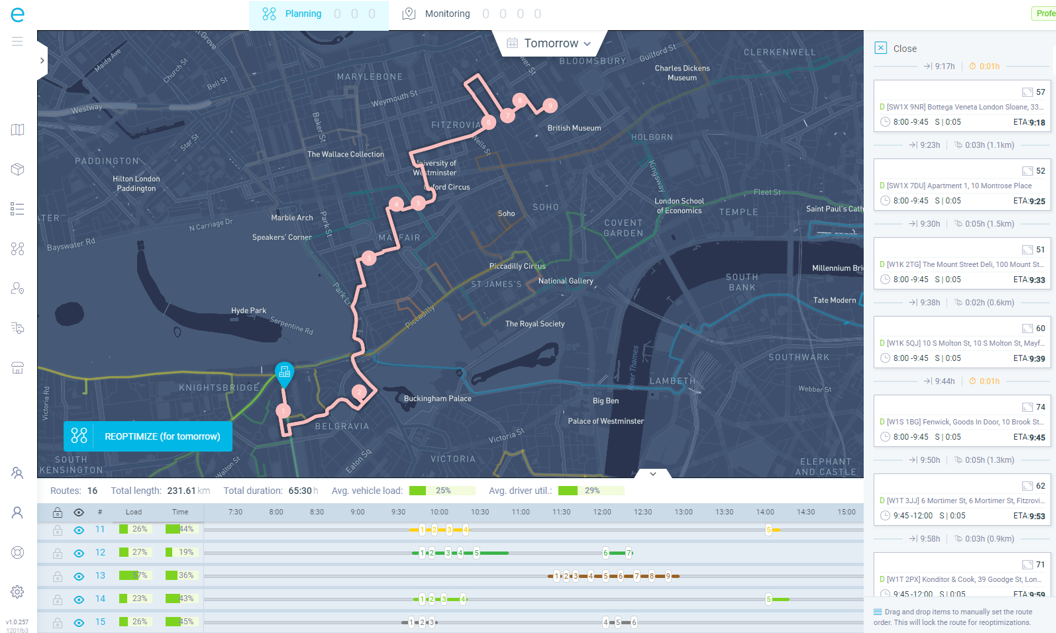
Route optimization is an essential function of any route planning or delivery management software.
It relies on complex algorithms to allow you to find optimal routes between multiple stops. (Based on various external and internal parameters)
The route optimization feature should allow you to plan multiple routes (for multiple vehicles), and calculate the best paths between those stops within seconds. While still allowing you to add or remove pick-ups and drop-offs manually.
At the same time, it should have built-in geocoding to generate and update maps in real-time. So, you can easily track drivers as they move on each route.
And you should be able to do all of this using one click. With a user-friendly interface and a drag-and-drop feature that lets you easily make changes to all routes and stops.
Tour bus route planners should be able to make changes on the go. That’s why the software should provide advanced routing information, and allow you to adjust routes, change stops, or add new items to the tour schedules in real-time.
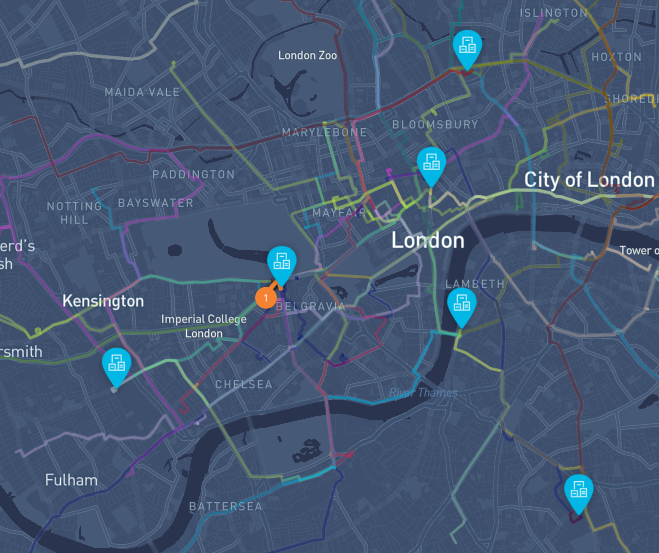
Real-time bus tracking uses geocoding and GPS to monitor the location of each one of your vehicles on the road.
It helps you to resolve routing problems on the go and provides tracking information to dispatchers.
The best bus tracking feature should keep track of buses in real-time, and collect other vital data such as mileage and fuel consumption.
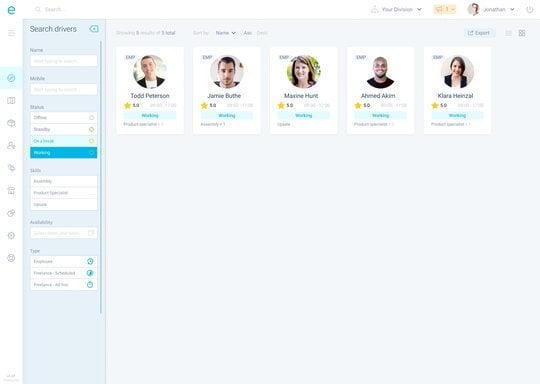
Bus driver management allows you to manage drivers’ routes and schedules. But it also ensures a safe and reliable exchange of information between drivers and dispatchers.
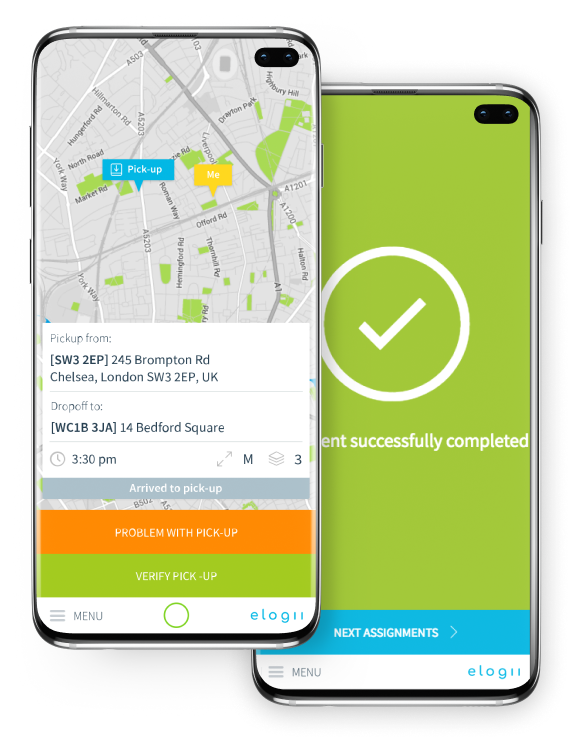
With the mobile app, drivers have easy access to the routing program while being on the road
That’s why mobile deployment on Android and iPhone is a must.
A passenger information system allows you to collect, store, access, and use data related to each passenger on your tour.
You can use this system to provide passengers with information, as well. They can see data related to your drivers, vehicles, and tour schedule through visual, voice, or other media.
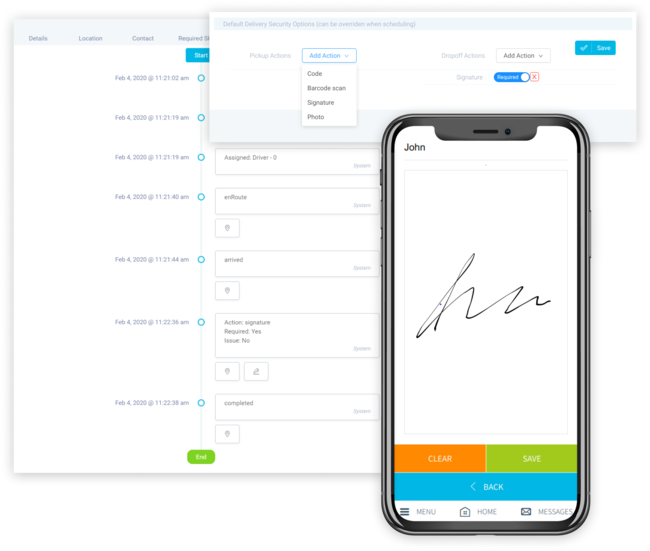
Automated reporting helps tour managers and operators to monitor and evaluate performance by gaining direct insight from the field.
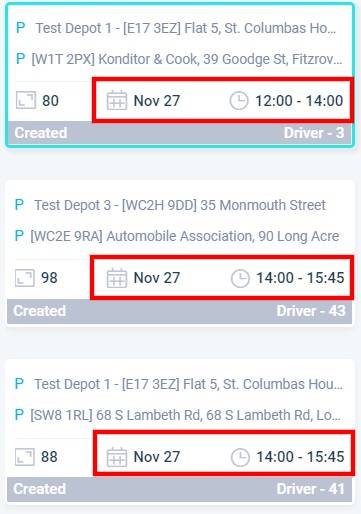
Tour scheduling allows you to easily create itineraries for each bus. Best of all, you import all data via a spreadsheet (.csv) file while the software automatically generates the schedule.
The software can dispatch arrival and departure times with the bus ID and time-stamp from each stop along the tour. And report it back to the central control center.
With tour management, you can automate every element of the tour. You can track all of your tours, buses, and drivers from one central location. And make adjustments to routes and schedules on the go.
The average cost of a monthly subscription for bus route optimization software is $182.35 per month. But the price can be higher or lower depending on the provider and their terms.
To find out more, please read our article about the delivery management software cost.
There are a lot of different bus routing software solutions available on the market. And eLogii is one of the leading route optimization apps among them.
Our powerful software can provide your business with an end-to-end cloud-based solution for planning, routing, and optimizing all of your tours.
We have everything you need to start improving your bus tours.
Learn how to plan and optimize routes in Excel (+free templates), and how to use spreadsheets with Google Maps, Route Optimization Software, and more.
We’re super excited to launch New Route Optimization Modes. These new modes make it even easier to maximize efficiency when optimizing routes with...
This is a guide about how to optimize route planning. If you want to plan efficient routes, spend less time doing it and cut costs, then this is for...
Be the first to know when new articles are released. eLogii has a market-leading blog and resources centre designed specifically to help business across countless distribution and field-services sub sectors worldwide to succeed with actionable content and tips.
